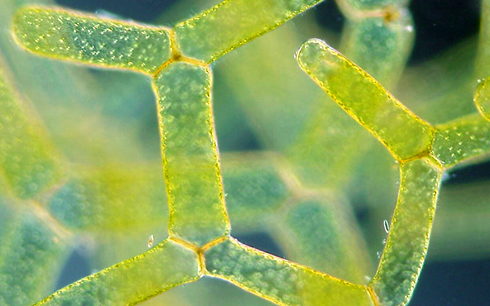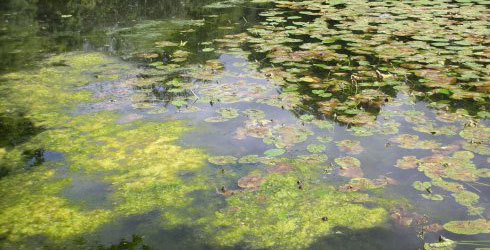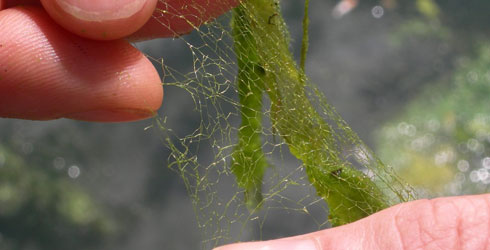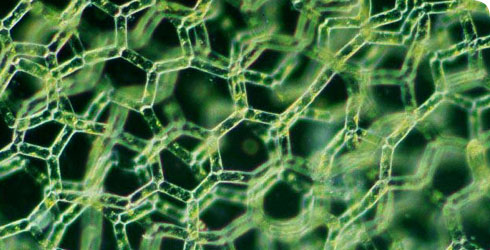Hydrodictyon reticulatum (water net)
Hydrodictyon reticulatum, a very invasive nuisance alga, is commonly known as ‘water-net’ reflecting the net-like structure of its sack or membrane-like colonies.
Over the past 20 years it has become more common and widely distributed in ponds, lakes and rivers in the British Isles.
Water net is a serious nuisance because it
- clogs waterways and irrigation ditches,
- taints potable water,
- causes economic losses to trout fisheries,
- smothers aquatic plants and fauna
- adversely impacts boating, fishing, swimming and tourism
The rapid spread of the water net is believed to be a response to elevated and extended summer water temperatures and low river flows caused by climate change.
Species detail
Hydrodictyon reticulatum cells are
- cylindrical to oblong-oval, up to 15mm long
- 2-4 adjacent cells connected by their edges and forming 5-6-sided meshes
Meshes combine to form colonies or mats
- a single-layered membrane or sac-like network of several thousand cells
- free-floating or secondarily attached
- reaching over 50cm long
- meshes clearly visible in large colonies
-

Taxonomy
Find out about the shape, size and structure of water net.
-

Distribution and habitat
Discover where in the world Hydrodictyon reticulatum appears and where it is currently spreading to.
-

Biology
Hydrodictyon reticulatum growths can taint the water in drinking water reservoirs. Learn more about the reproduction process and physiology of water net.
-

Ecological impact
While water net has a range of negative impacts on the waters it grows in, it is also believe to have some positive impacts. Find out more about the negative and positive impacts of Hydrodictyon reticulatum as well as why its rapid growth is thought to be a response to climate change.
-

References
Get reference material for Hydrodictyon reticulatum.
Images

Microscopic view of a portion of the net-like colony. © Peter York

Hydrodictyon reticulatum from Sugaonuma pond, Japan. © Joso Ibaraki Pref., Japan.

Floating mats of the water net in July 2009 floating on the surface of Keston Pond, near Bromley, Kent, UK.

Close view of the mat showing its green ‘fish-net’ stocking appearance.

Secondarily attached mats of the water net in the shallows along the bank of the River Wye (UK).
Author
Professor David John
Scientific Associate
Department of Botany
